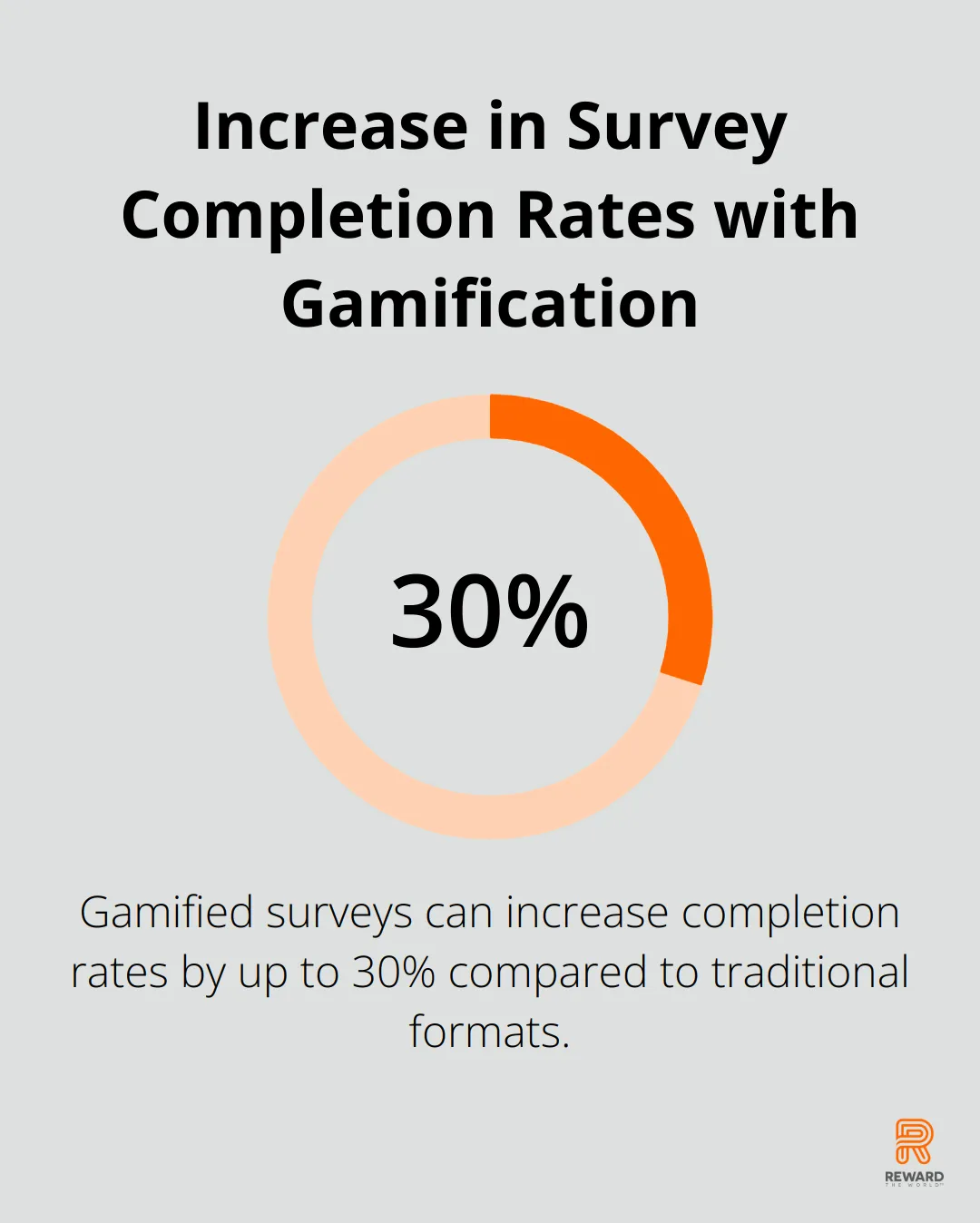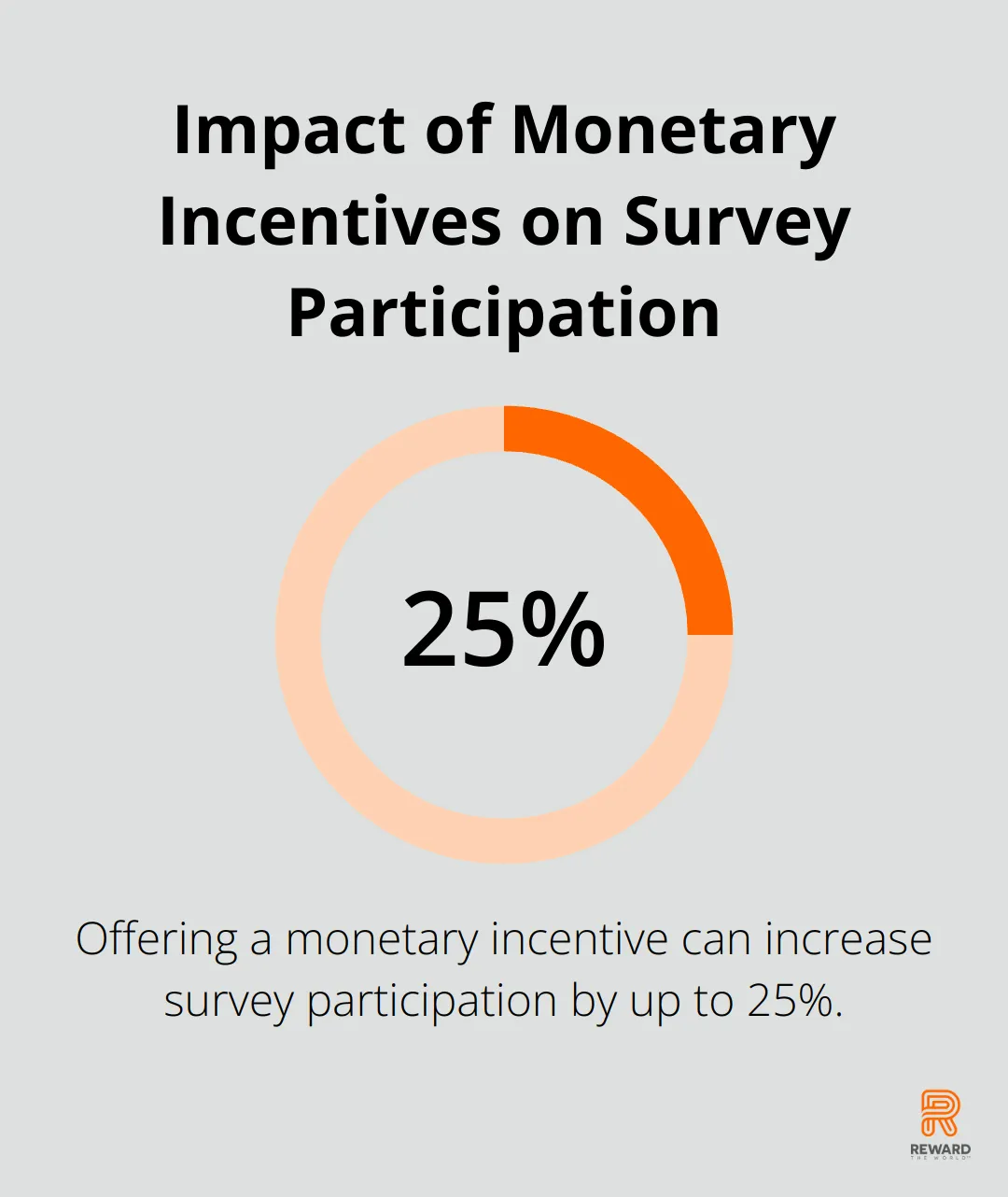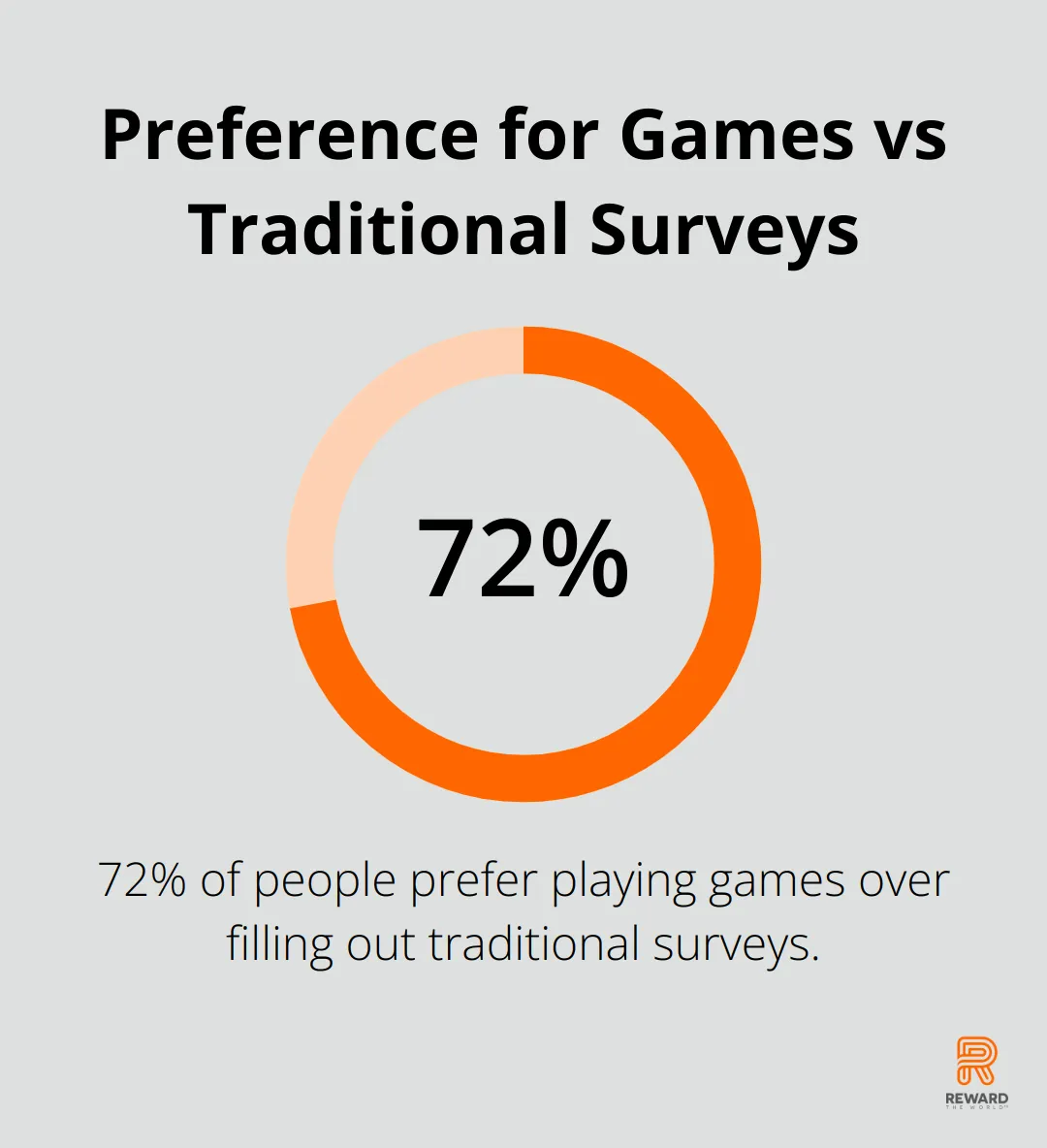
Surveys are essential for gathering valuable insights, but low completion rates can hinder their effectiveness. At Reward the World, we’ve found that survey gamification is a powerful tool to boost engagement and response rates.
By incorporating game-like elements into surveys, we can transform the experience from a chore into an enjoyable activity. This blog post will explore how to leverage gamification techniques to create more engaging surveys and improve your data collection efforts.
What is Survey Gamification?
Defining Survey Gamification
Utilizing Gamification Techniques has emerged as an effective way to increase survey response rates. By incorporating elements of game design, survey gamification transforms data collection from a mundane task into an engaging experience. At Reward the World, we’ve witnessed how this approach revolutionizes the way organizations gather insights.
The Psychology Behind Gamification
The success of gamification in surveys stems from fundamental human motivations. Elements like points, challenges, and rewards activate the brain’s reward system, triggering dopamine release-a neurotransmitter associated with pleasure and satisfaction. A study by the National Center for Biotechnology Information confirms that such incentives significantly boost response rates, particularly when traditional motivations fall short.
Tangible Benefits for Your Surveys
Survey gamification doesn’t just make the process more enjoyable-it drives concrete results. Studies show gamified surveys can increase completion rates by 10-30% compared to traditional formats. This surge in engagement translates to more comprehensive and accurate data collection, providing organizations with richer insights.

Engagement Metrics That Matter
Industry findings align with our experience at Reward the World: gamification significantly improves performance over traditional methods. Websites that feature gamification see a 29% increase in visitor engagement. This heightened interaction leads to more thoughtful responses and a deeper understanding of the audience.
Quality Data Through Enjoyable Experiences
Gamified surveys create an entertaining atmosphere that encourages honest and thoughtful responses. Research suggests a positive influence of gamification strategies on motivation, although in the long run, such motivation can decline. This enthusiasm translates to higher quality data, providing more reliable insights to inform decision-making processes.
As we explore the effective techniques for implementing gamification in surveys, you’ll discover how these elements come together to create powerful, engaging experiences that yield valuable results.
Gamification Techniques That Work
At Reward the World, we’ve witnessed how the right gamification techniques transform survey participation. Let’s explore some proven strategies that make surveys more engaging and boost completion rates.
Progress Bars: The Silent Motivator
Progress bars serve as a simple yet powerful tool. They tap into our innate desire for completion. University of Toronto continues to exceed Ontario graduation rates, showing significant improvement year over year. We recommend dynamic progress bars that update in real-time, giving participants a sense of accomplishment with each question answered.
Point Systems: Turning Answers into Achievements
Point systems add a competitive edge to surveys. Research shows that offering a monetary incentive can increase participation by up to 25%. The key is to make the points meaningful. For example, you can offer a discount code or entry into a prize draw for reaching certain point thresholds. This approach not only motivates completion but can also drive post-survey actions beneficial to your business.

Interactive Elements: Beyond Multiple Choice
Static questions are out; interactive elements are in. Drag-and-drop prioritization, slider scales, and image selection questions transform surveys from chores into games. A Nielsen Norman Group study revealed that users take 19% longer to complete tasks when they encounter inconsistencies in language across different interfaces. Try to incorporate at least one interactive element for every five standard questions to maintain interest.
Personalized Feedback: The Power of Instant Gratification
Immediate, personalized feedback satisfies our craving for instant results. After completing a section, show participants how their answers compare to others or provide insights based on their responses. This technique, known as “social proof,” can increase survey completion rates.
Leaderboards: Fostering Healthy Competition
Leaderboards tap into our competitive nature. They’re particularly effective for internal surveys or customer feedback programs with repeat participants. However, use them judiciously. Leaderboards work best when paired with tangible rewards and when participants can opt out if they prefer not to compete.
The goal of gamification is to enhance the survey experience, not overshadow it. Always ensure that your gamification elements align with your survey objectives and don’t compromise data integrity. In the next section, we’ll explore how to implement these techniques effectively in your survey design, ensuring you create surveys that participants actually look forward to completing.
How to Design Effective Gamified Surveys
Tailoring Gamification to Your Audience
The first step in creating an effective gamified survey is to understand your audience. Different demographics respond to various gamification elements differently. For instance, millennials often engage well with social sharing and leaderboards, while older generations might prefer simple point systems and progress bars.
A study found that 72% of people prefer playing games over filling out traditional surveys. This statistic underscores the importance of knowing your audience’s preferences. We recommend conducting a pilot test with a small segment of your target audience to gauge which gamification elements resonate best.

Striking the Balance: Fun vs. Data Quality
Making surveys enjoyable is important, but it’s equally crucial not to compromise data quality. Overly complex gamification can distract participants from providing thoughtful answers. Simple, intuitive game mechanics work best.
For example, a points system where participants earn rewards for completing sections can motivate without overwhelming. A study focused on how gamification can engage online students from skills, emotional, participation, and performance perspectives.
Choosing the Right Tools and Platforms
Selecting the appropriate tools is vital for successful implementation. Many survey platforms now offer built-in gamification features. SurveyMonkey, Qualtrics, and Typeform are popular choices that provide various gamification options.
However, for more advanced gamification, specialized platforms like Reward the World offer comprehensive solutions. These platforms allow for deeper customization and integration with existing systems, providing a seamless experience for both survey creators and participants.
Best Practices for Gamification Integration
When you integrate gamification into your surveys, consider these best practices:
- Keep it relevant: Ensure gamification elements align with your survey’s purpose and your brand identity.
- Provide clear instructions: Explain how the gamified elements work to avoid confusion.
- Offer meaningful rewards: Incentives should be valuable to your audience (this could range from discount codes to entries into a prize draw).
- Use progress indicators: Visual cues like progress bars can significantly boost completion rates.
- Implement mobile optimization: With 91% of Americans now owning a smartphone, ensure your gamified elements work smoothly on mobile devices.
- Analyze and iterate: Regularly review the performance of your gamified surveys and make adjustments based on data and feedback.
These guidelines and the right tools will help you create surveys that not only gather valuable data but also provide an engaging experience for your participants. The goal is to make the survey process enjoyable without sacrificing the quality of insights you receive.
Final Thoughts
Survey gamification transforms data collection into an engaging experience. Progress bars, point systems, and interactive elements significantly increase completion rates and data quality. We recommend tailoring gamification to your audience and striking a balance between entertainment and data integrity.
The future of survey gamification looks promising with potential advancements in virtual reality and artificial intelligence. These technologies may soon offer immersive experiences and personalized elements, adapting to individual preferences in real-time. Such innovations will make surveys even more effective and enjoyable for participants.
Reward the World offers a comprehensive platform that integrates gamification into your survey strategy. Our solution boosts engagement and provides valuable insights to drive your business forward. Start your survey gamification journey today and create experiences your participants will genuinely enjoy.
